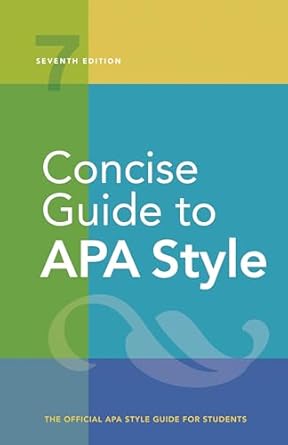[toc]
writing style continuity transitions explained
Concise Guide to APA Style: 7th Edition (OFFICIAL)
Page 58 Review
The Art of Smooth Writing: A Detailed Commentary
This excerpt delves into the crucial aspects of writing style, particularly focusing on continuity and transitions.
In essence, it emphasizes the importance of a seamless flow of ideas to enhance readability and comprehension.
Let’s dissect the key elements presented:
Continuity: Weaving a Coherent Narrative
The passage begins by highlighting the pitfalls of disjointed writing: “work that lacks continuity and flow may seem disorganized or confusing, and details may seem incomplete or inconsistent.” This sets the stage for the core argument – a coherent narrative is paramount.
The text suggests that “readers will better understand your ideas if you aim for continuity in words, concepts, and thematic development from the opening statement to the conclusion.” This is not merely about grammatical correctness, but about building a logical progression of thought that keeps the reader engaged and informed.
The importance of clear relationships between ideas is emphasized, advocating for a “logical order to improve your paper’s readability.” This is about more than just listing points; it’s about crafting a journey for the reader.
Transitions: Bridging the Gaps
The next crucial element is transitions.
The text states: “To improve continuity and flow in your writing, check transitions between sentences, paragraphs, and ideas to ensure that the text is smooth and clear rather than abrupt or disjointed.” Effective transitions act as bridges, seamlessly connecting different parts of your writing.
Without them, the text can feel “choppy or disjointed,” potentially leading the reader to believe “that you have abandoned an argument or theme prematurely.” Instead, the writer should “consider amplifying its discussion” to provide a more thorough and satisfying reading experience.
Punctuation: The Silent Communicator
The passage then moves on to a less obvious but equally important aspect: punctuation.
It argues that “Punctuation marks contribute to continuity and flow by signaling transitions and demonstrating relationships between ideas.” Punctuation isn’t just about grammar; it’s about rhythm and emphasis.
The text draws a parallel to speech, noting that punctuation reflects “the pauses, inflections, subordination, and pacing normally heard in speech.” The key takeaway here is balance: “Neither overuse nor underuse one type of punctuation… Instead, use punctuation to support meaning.” This emphasizes that punctuation should serve the message, not distract from it.
Transitional Words and Phrases: Signposts on the Road
Finally, the excerpt addresses the role of transitional words and phrases.
The text notes that these tools “help maintain the flow of ideas, especially when the material is complex or abstract.” Examples are provided, categorized by their function: “time links (e.g., ‘then,’ ‘next,’ ‘after,’ ‘while,’ ‘since’),” “cause-effect links (e.g., ‘therefore,’ ‘consequently,’ ‘as a result’),” “addition links (e.g., ‘in addition,’ ‘moreover,’ ‘furthermore,’ ‘similarly’),” and “contrast links (e.g., ‘but,’ ‘conversely,’ ‘nevertheless,’ ‘however,’ ‘although’).” These words act as signposts, guiding the reader through the writer’s thought process.
A Word of Caution: Adverbs
The excerpt concludes with a cautionary note about adverbs: “Writers often overuse adverbs, so ask yourself whether the introduction or transition is needed.” Adverbs like “importantly” and “interestingly” can often be redundant, adding little to the meaning.
The text suggests that they can often “be changed to enhance the message of a sentence or simply omitted without a loss of meaning.” This highlights the importance of concise and purposeful writing.
In Conclusion
In essence, this excerpt provides a valuable guide to crafting clear, coherent, and engaging writing.
By focusing on continuity, transitions, punctuation, and the judicious use of transitional words and phrases, writers can ensure that their ideas flow smoothly and resonate with their audience.
The text reminds us that effective writing is not just about what you say, but how you say it, and the importance of creating a seamless and logical reading experience.
Buy full ebook for only $18: https://www.lulu.com/shop/american-psychological-association/concise-guide-to-apa-style-7th-edition-official/ebook/product-rmzpq54.html?page=1&pageSize=4
Writing Style Continuity Transitions Explained
Read more: Citation Styles Guide: Mastering Academic References

